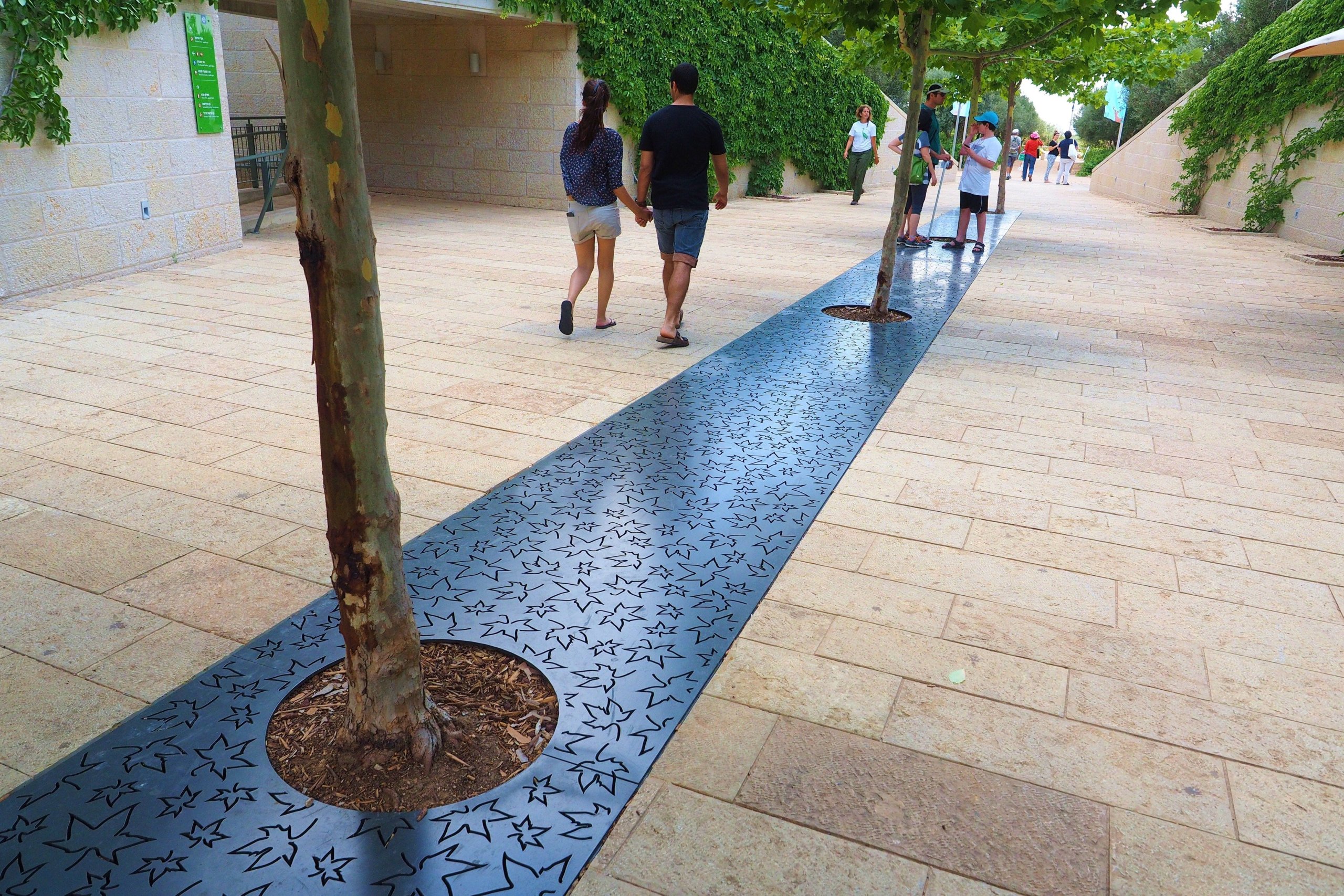
Let the Trees Breathe Through Their Roots
A dozen plane trees were planted at the main entrance to the Gardens and in the courtyards of the building to provide shade. The Oriental plane is a fast-growing deciduous tree that grows up to 25 m tall and is long-lived. Most of the trees indeed grew rapidly to great heights; however, surprisingly, the four trees that were planted along the walkway that links that main entrance to the Gardens themselves did not develop well and showed signs that they were under stress. The garden staff began to study this mystery. The herbaceous plants that were planted around the trees were removed out of concern that they were competing with the trees’ roots for resources, but to no avail. The diagnosis also rejected signs of diseases and pests. So what had happened?
The root of the problem lies in a change that occurred in the structure of the soil in the roots’ surroundings, which were subject to pressure from the paved footpath and the thousands of visitors that walk it. The heavy weight compacted the soil and caused a change for the worse in the soil’s infiltration ability, drainage, transfer of nutrients and amount of air available for the roots. These delayed the development of the trees, reduced their vitality, and almost caused their death.
The understanding that the gardeners attained was that the quality of the soil surrounding the roots must be improved to allow them to breathe and gain accessibility to the nutrients they require. For this purpose, they used a system of strong, underground cells developed by the Dutch company, Silva Cell. The system supports a hovering pavement and provides the trees’ roots with suitable nutrition via fertiliser, water, and of course, air flow.
In the visible part, iron panels with a plane-tree leaf design were placed around the trees. Now visitors to the Gardens can tread on them without worrying about compacting or causing harm to soil quality. The trees are growing, developing, enjoying good conditions and providing plenty of shade. It’s a winning combination of nature’s needs, human needs and design.
